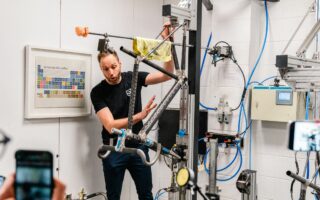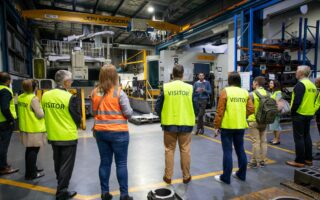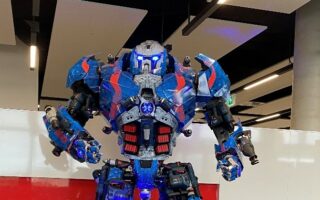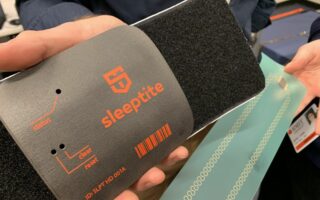AMGC manufacturing best practice tour wrap up
As part of Australian Manufacturing Week (AMW) 2023, AMGC hosted a Manufacturing Best Practice Tour to highlight four outstanding Australian manufacturers.
AMGC tour participants got a behind the scenes look at how Bastion Cycles, ANCA, Bosch, and collaborative partners Sleeptite and RMIT University approach their manufacturing operations.
Attended by 30 manufacturers from across Australia, participants were shown how being better not cheaper, being globally competitive and embracing the latest in technology can improve a business’s operations, product value, and market reach.
Importantly, all attendees came away with a clear understanding on the power of collaboration.
Bastion Cycles
Opening the tour was Bastion Cycles – a global bicycle and advanced materials manufacturer and AMGC co-invested project lead.
Bastion Cycles recently launched a $47,000 bicycle at the beginning of the year, which is an example of competing on value and not cost.
Co-founder James Woolcock told visitors that a custom-made bike typically goes for $25,000 though it can easily top $30,000 if a client wants a few left-of-centre features.
“If you’re not a cyclist, it sounds like a horrendous amount of money…. But what we are pitching ourselves to is the very pinnacle of the cycling market.”
Like a Richard Mille watch, he explained, it’s about striving to provide the highest level of quality and customer experience. Customers are happy to pay for the best, which involves frames of filament wound carbon fibre tubing and additively manufactured titanium lugs, designed to perfectly match a customer’s body and needs for responsiveness on the road.
Only 88 of its $47,000 Archangel bikes are being made, with 34 orders placed since going on the market in January.
The company quotes 12-month lead times, and is fast outgrowing its existing facility, where two half-a-million-dollar Renishaw 3D printers operate 24/7. Such is demand that the company is seeking to treble the size of its facility to house double the number of printers and associated staff.
There are about 70 bikes in various stages of completion when the tour visited, including a visit to a recently added composites workshop at the site. The company produces about 220 frames a year.
Bastion was founded in 2015 by three engineers from the Toyota Technical Center which closed the following year.
“We travelled and worked overseas and could’ve stayed in the Toyota group, gone back to Japan or to Ann Arbour, but we wanted to make something in Melbourne,” Woolcock told guests.
“We wanted to create an opportunity for young people in Melbourne to do engineering jobs, and interesting jobs. And we were cyclists. So, we went from riding in the morning and talking about bikes, and designing cars during the day, to just doing bikes.”
The trio knew that the economy of scale game was not one worth playing, and saw an opportunity at the luxury end, providing a high level of customisation, engineering, and complexity.
Just keeping a printer producing custom lugs, which have exquisite lattice-shaped innards and thin walls to keep weight down, isn’t simple. Woolcock explained that there are numerous points of failure, ranging from gases to lasers to room temperature control to a powder sieve. Though it’s never happened, a power outage alone could cost perhaps $5,000. It’s a finicky business, but that’s what works, right down to surface finishes.
“We’re in a space where the artisan handwork, hand-built aspect to the product has value,” Woolcock explains of the titanium lugs.
“If you’re doing thousands of a thing there are ways to scale it with vibratory finishes, but we’re doing a fair bit of hand-finishing.”
ANCA
While Bastion demonstrated how finding your niche can spur growth, second tour stop ANCA demonstrated how owning a niche and investing in ongoing research and development (R&D), such as the collaborative projects undertaken with AMGC, was key to maintaining a business over 50-years.
An enduring example of what Australian manufacturing excellence looks like, ANCA has won countless awards for its contributions to the industry and its export successes. The Baywater-based machine tool company is preparing to celebrate its 50th anniversary next year.
“With the primary product that we make, the tool and cutter grinder, the first machine was sold to the US,” Group Strategy and Communications Manager Johanna Boland told guests.
“So, it is a much larger export business for us rather than a domestic business.”
The ANCA Group generally exports about 99 per cent of what it makes, with about 85 per cent of revenues from sales of grinding machines. These machines are prized by, and create tools for, everyone from Boeing to Rolls-Royce to companies throughout Apple’s supply chain.
Half a century ago co-founders Pat Boland and Pat McCluskey, who are still at the company, started a business focussed on the emerging world of CNC machinery. After initially retrofitting other companies’ machines, they saw the opportunity to build their own.
Today, ANCA employs 1,300 staff worldwide, with 2,500 customers and holds a presence in 31 countries. It continues to lead the world in its ultra-competitive field, investing nearly a tenth of its revenues into R&D.
It has 19 registered patents and 12 patents pending. R&D in recent years has included development of a machine for additive manufacture of cutting tools and a SCARA robot for loading and unloading machines. Each has been supported by an AMGC co-funded collaborative project.
The incredible precision expressed in tools with micron-level detail demands a high level of vertical integration. Visitors heard that this goes right down to the bottom of each machine which rests on the company’s proprietary polymer concrete.
Then there’s the “brain” of each machine, its software, and control system.
Software has always been an important part of ANCA’s success, and its ANCA Motion division applies ANCA’s IP to the problems of OEM machine builders.
“What you don’t see is the software stack on top of it. So really that’s the true value proposition of what we do in many ways,” explained Troy Robinette, ANCA Motion’s Research & Development Manager, to visitors observing a machine going through its paces.
“There’s many years of experience and knowledge which have gone into a product, but you don’t see it. What you do see is defining the CAD/CAM side of things: you generate a shape, you press a button and it generates a part program. Then it hands over to an ANCA Motion solution, where we interpret that to work out how to move the axes within the machine limits and to achieve its accuracy targets.”
Over its 50-year history, ANCA has collaborated with numerous other entities from specilised niche manufacturers to global giants, including Bosch Australia, just ‘down the road’ in Clayton.
Bosch Australia
Welcomed by an oversized ‘gundam’ robot, the minute tour attendees entered Bosch Australia’s facility they were acutely aware of the global manufacturing giant’s capability. But the broad facade hides one of Australia’s best kept manufacturing secrets that is paired with a hugely knowledgeable team offering support service to manufacturers large and small.
Behind the impressive main building is a facility that pumps out diodes that support a global supply chain for automotive components. Able to manufacture over 120 million diodes a year, the Clayton facility is responsible for approximately 20 per cent of the global market. Furthermore, it is the only site globally where Bosch makes such components.
The site offered tour participants an opportunity to see Bosch’s manufacturing solutions expertise in action, while understanding how the company manages quality and productivity across its operation through the adoption of Lean manufacturing principles and digitisation.
Across from Bosch’s diode facility is the company’s newest building, dedicated to its Bosch Australia Manufacturing Solutions or BAMS for short. Opened in 2021, the facility and its teamwork with manufacturers of all sizes provide practical advice on automation strategies while being able to build automation equipment and special purpose machines for customers.
“One of the biggest misconceptions about Bosch is that we only work with big manufacturers and that couldn’t be further from the truth,” said Paul Gekas Business Development Manager, Manufacturing Solutions at Bosch Australia.
From small, highly innovative manufacturers to large, tour participants saw firsthand how the BAMS team were working closely with other AMGC projects, included 3RT – who have developed a novel way to make a hardwood-like product from waste material, to how the company helped with Australia’s response to the COVID pandemic by playing a critical role in the local manufacture of invasive ventilators.
What participants left with was a deep understanding of Bosch’s capabilities and its ability to collaborate across small and large projects. Bosch’s willingness to work with all manufacturers is one of the reasons the company will continue to thrive in Australia beyond its proud 115-year local operations, a perfect example of the power of collaboration.
Sleeptite
Collaboration can take on many forms and the final stop of the tour demonstrated that when research institutions and manufacturers collaborate to translate theory into commercial outcomes the result can be very powerful and revolutionary in the case of Sleeptite.
Now, a bed that watches you sleep may sound creepy, but this is precisely where RMIT and manufacturer Sleeptite have focused their efforts by leveraging the latest in electronics and materials science.
“Semiconductor cleanrooms are the opposite of medical-grade cleanrooms,” explained Professor Sharath Sriram to guests of RMIT University’s Micro Nano Research Facility (MNRF.)
“In a medical clean room, you are keeping the person clean from the room. In these rooms you’re keeping the rooms clean from the person.”
The MNRF, which features semiconductor cleanrooms among its nine labs, was the last stop on the tour.
Its work can be boiled down to three things, explained Sriram. Devices that move electrons, others that move photons, and those that move fluids. Some devices even combine electronics, photonics, and microfluidics.
The site has been vital for the commercialisation progress made by Sleeptite, which is developing Remi, a system of stretchable sensors and software for monitoring residents in aged care facilities.
Lab trials have shown the company’s sensors, developed with RMIT, can measure respiration and heart rate, among other signals, according to Sleeptite’s Director of Research & Development, Dr Andrew Tucker. This opens a wealth of potential applications, such as, seizure monitoring and sleep states, but the current focus is on tracking presence, posture, and position for the elderly.
“This is all about making the care workforce more efficient in an aged care facility, so they don’t have to randomly check on someone to see if they’re okay, but will instead get a prompt,” explained Tucker.
The company is hoping to have Remi on the market by the end of the calendar year to help aged care workers do their jobs more effectively.
Sriram describes the flexible sensors behind Remi as “a slightly more complex variant” of a flexible strain gauge and manufactured using a process similar to screen printing t-shirts.
“A lot of the innovation was around creating formulated inks that work for Sleeptite’s applications,” he explained.
“Then we went to a manufacturing partner of Sleeptite, Sleepeezee, who is part of the AMGC project. And they started doing test prototypes. Within nine months we were making devices at the manufacturer.”
Sleeptite was awarded $872,004 through the AMGC Commercialisation Fund in 2021. At the end of the project, said Tucker, it will have production established for R&D purposes at the company’s Braeside headquarters. Among other things, this will open a new phase in a planned long-time collaboration with RMIT.
“Then we can try all different sorts of applications and the research will go on for a long time,” said Tucker.
A survey of attendees found that 100 per cent of respondents found the Manufacturing Best Practice Tour was valuable to their business and equally would recommend this tour to another industry colleague. Be sure to keep an eye out for upcoming AMGC events.




